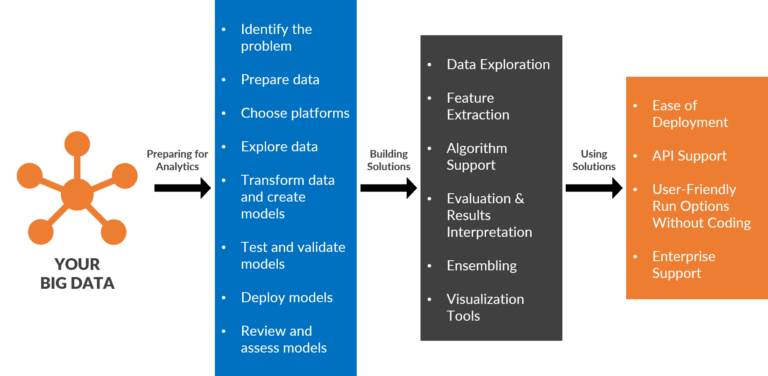Overview
Big data analytics is the process of analyzing huge and fluctuated informational collections – collections that can reveal shrouded designs, obscure connections, advertised patterns, client inclinations, and other valuable data that can create associations to facilitate more-educated business choices. Speed and efficiency are some of the new benefits that are offered by big data. A few years ago, it was impossible to process a huge amount of data in a short span of time, but with real-time analytics, businesses can quickly and easily identify insights for immediate decisions and more effective digital business transformation. The capacity to work quicker and remain deft gives organizations an aggressive edge they didn’t have previously.

Why Real-Time Analytics?
With real-time big data analytics, it is possible to process data as it arrives and provide insights about the data instantaneously. It helps businesses conduct more effective marketing campaigns, discover new revenue opportunities, improve customer service delivery, enable more efficient operations, and gain a competitive edge. Companies implement real-time big data analytics because they want to make more informed business decisions.
Traditional business intelligence queries answered basic questions about business operations and performance. Big data analytics, on the other hand, uses complex applications powered by high-performance analytics systems. Streaming analytics applications are also becoming common in the big data environment as organizations need real-time analytics on data fed into Hadoop systems. Of late, big data analytics has started adopting the concept of a Hadoop data lake that serves as the primary repository for incoming streams of raw data. This provides the facility to directly analyze the data in a Hadoop cluster or run it all through a processing engine like Apache Spark.
What is Spark? And Why Use It?
Spark is a broadly useful and extremely quick group figuring framework. It is the future of big data analytics. Earlier, with Hadoop MapReduce, it was conceivable to break down the colossal measure of information that was available at that point, but Spark offers a way to analyze fresh streaming data and is faster than MapReduce. Apache Spark has plainly turned into the successor to Hadoop MapReduce for investigative and machine learning tasks at hand because of Spark’s convenience and in-memory execution.
Where is Real-Time Big Data Analytics Being Utilized?
Real-time big data analytics is being used in the following industries:

Advantage of Real-Time Analytics
An organization has the opportunity to reap numerous benefits by employing real-time big data analytics. The following are just a few of those benefits:
- Real-time insights can help organizations correct their mistakes quickly
- It can help organizations stay one step ahead of the competitions
- Organizations can provide quick suggestions in real-time that can help in customer retention
- Real-time fraud detection can help in avoiding huge loses
- Even though the initial cost of a real-time system is high, it will prove to be a substantial cost-saving in long run
Conclusion
The real challenge with real-time big data analytics is coming up with the right combination of technologies and to integrate them to build a complete and effective system that is fast and gives accurate results. There are many solutions available for this problem, which have proved themselves effective and reliable. Mastech InfoTrellis – the Data and Analytics business unit of Mastech Digital – is at the forefront of making these solutions a reality for leading organizations.
Start running on real-time today. Start running with Mastech InfoTrellis.

Garima Jain
Technical Consultant, Mastech InfoTrellis




















